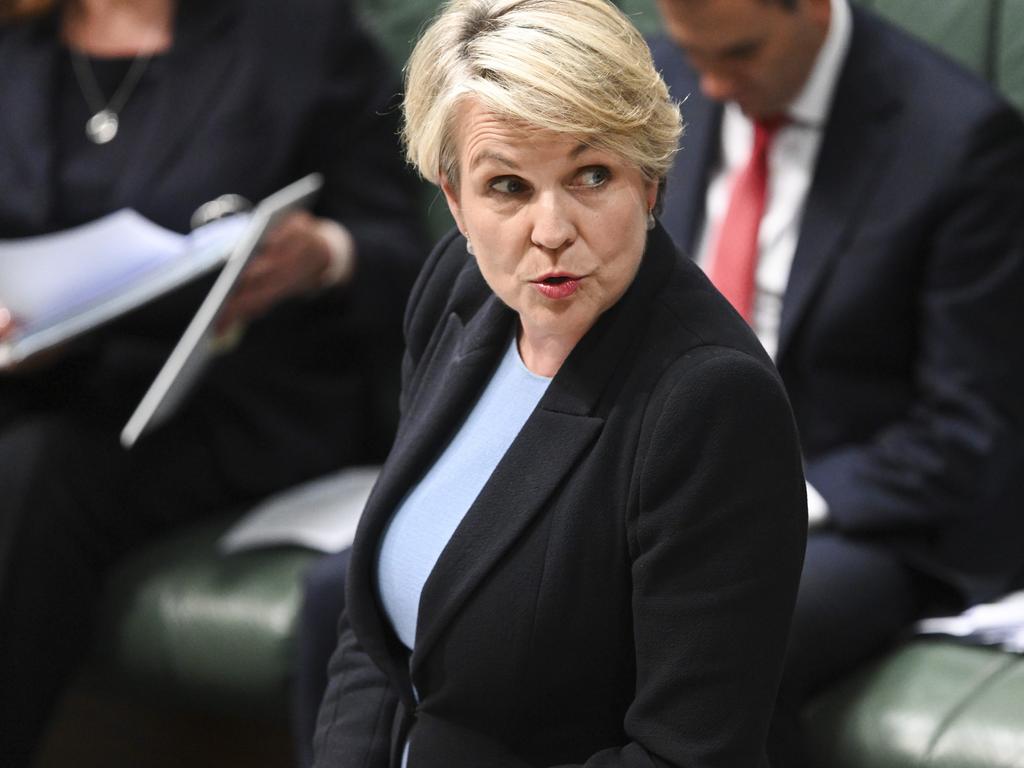Renewable energy cowboys take on rural communities
Renewable energy developers are facing a new ratings system after a report found their multibillion-dollar projects were creating anxiety and mistrust in rural communities.

Renewable energy developers are facing a new ratings system to weed out “cowboys” from the industry, after an independent report found their multibillion-dollar projects were creating anxiety and mistrust in rural communities.
Australia has set aggressive targets to develop renewable energy generation sources to meet emissions-reduction targets, which has led to a gold rush-style wave of developers moving into communities.
Energy Infrastructure Commissioner Andrew Dyer said the energy transition had the potential to be lucrative for farmers and landowners. But he warned the practices of prospective developers had sowed deep mistrust and the government would need to act to repair the industry’s standing.
The Community Engagement Review, investigating the impact of renewable projects and infrastructure on landowners, was announced by Climate Change and Energy Minister Chris Bowen on July 4 last year. Mr Dyer concluded that transmission lines were a particular bone of contention among landowners. Australia must build about 10,000km of high-voltage power lines by 2050, and developers are searching for potential new developments to connect to them.
Mr Dyer said the rush of development was damaging.
“(Transmission lines) have unleashed a plethora of wind and solar farm developers, descending on the planned routes to attempt to sign up nearby landholders with exclusive contracts over their land,” Mr Dyer said. “There are far more potential renewable generation projects being pursued by developers than the proposed transmission lines may actually accommodate, which can unnecessarily create uncertainty, anxiety and consultation fatigue.”
The report found many landowners had been approached by multiple developers and each had asked for permission to enter properties to scope the potential of new zero-emissions projects.
Mr Dyer said transmission lines would unlock employment opportunities for regional Australia and new investment in communities, but the industry must first improve its reputation.
The report concluded Labor and state governments would need to plan better who was responsible for new developments, while recommending a new ratings system for developers to demonstrate their previous work on similar projects, along with a proper complaints system.
Mr Bowen said the government had provisionally accepted all the recommendations.
“Rating systems are pretty common around the country now, you know, with various industries, and it’s about giving communities and land holders and farmers assurance that if somebody knocks on their door they can check and see whether these guys are serious, to be very frank, if these guys are cowboys. That’s what we want,” Mr Bowen said on Friday on a visit to a wind farm in Bannister, NSW.
The peak body for green developers fired back a warning over the potential reforms.
Clean Energy Council chief policy and impact officer, Arron Wood, said specific recommendations around developer rating schemes and a greater role for governments in determining project locations would need to be undertaken carefully to avoid delays to projects, “leading to energy security risks”.
Labor is under growing pressure to rescue its signature transition pledge. It has vowed to drive a rapid expansion in zero-emissions generation, with renewables providing 82 per cent of the country’s power needs by the end of the decade. The target has contributed to the closure of coal power stations, leading the energy market operator to forecast all of Australia’s traditional source of electricity would be retired within 15 years.
Australia, however, is not on course to meet its target, and a failure would heighten the threat of blackouts and price rises.
To accelerate the transition, Labor said last year taxpayers would underwrite 32GW of new renewable energy generation under a so-called capacity-investment scheme. Under the scheme, should the wholesale electricity price fall below an agreed threshold, taxpayers would compensate the renewable energy project. Should the wholesale electricity price exceed a metric, developers would pay the government – a design that removes revenue risk from developers and accelerates much-needed investment.
The scheme is expected to ignite more renewable energy developments, but National Farmers Federation chief executive Tony Mahar said Labor would need to win over sceptical landowners and farmers.
“The report confirms what has been a breathtakingly poor reflection on the intersection between agriculture and renewable energy,” Mr Mahar said.
Nationals leader David Littleproud and the peak farming body have repeatedly called on the government to release its review into the impact of renewable projects on agricultural land and regional communities. The opposition accused Labor of “hiding behind secrecy”.
Mr Littleproud said farmers and regional communities would be disappointed with the review, arguing it failed to examine the real impacts on agricultural land. “This review gives zero indication of how farmers can continue to do their job without being impacted. It fails to give clarity on protecting their livelihoods,” Mr Littleproud said.








To join the conversation, please log in. Don't have an account? Register
Join the conversation, you are commenting as Logout